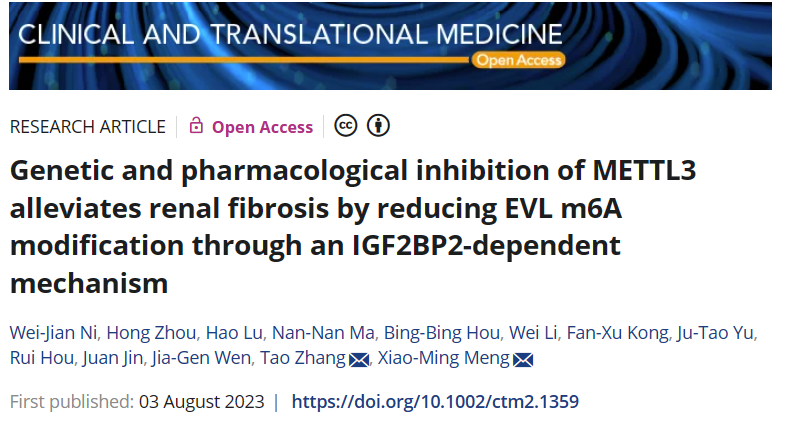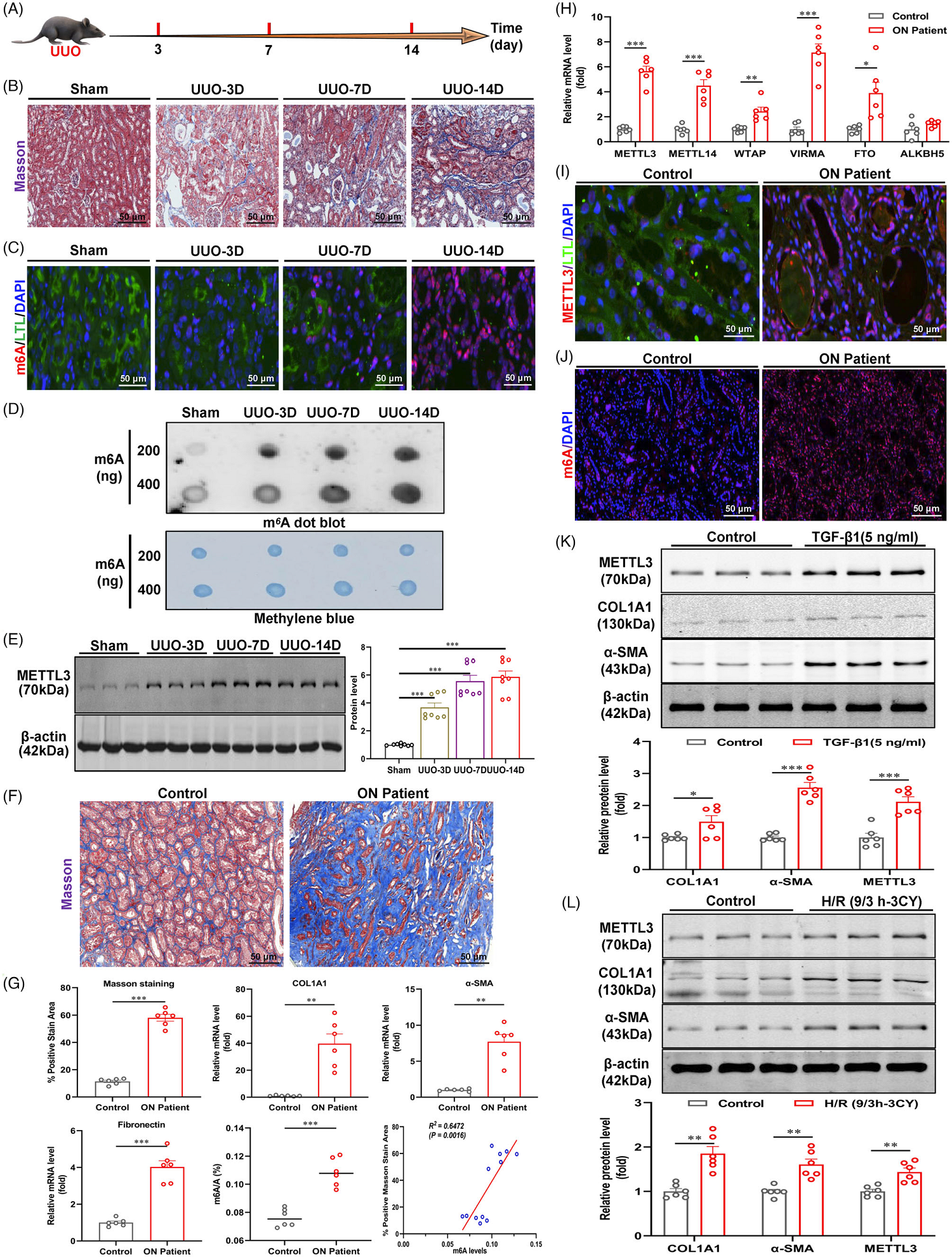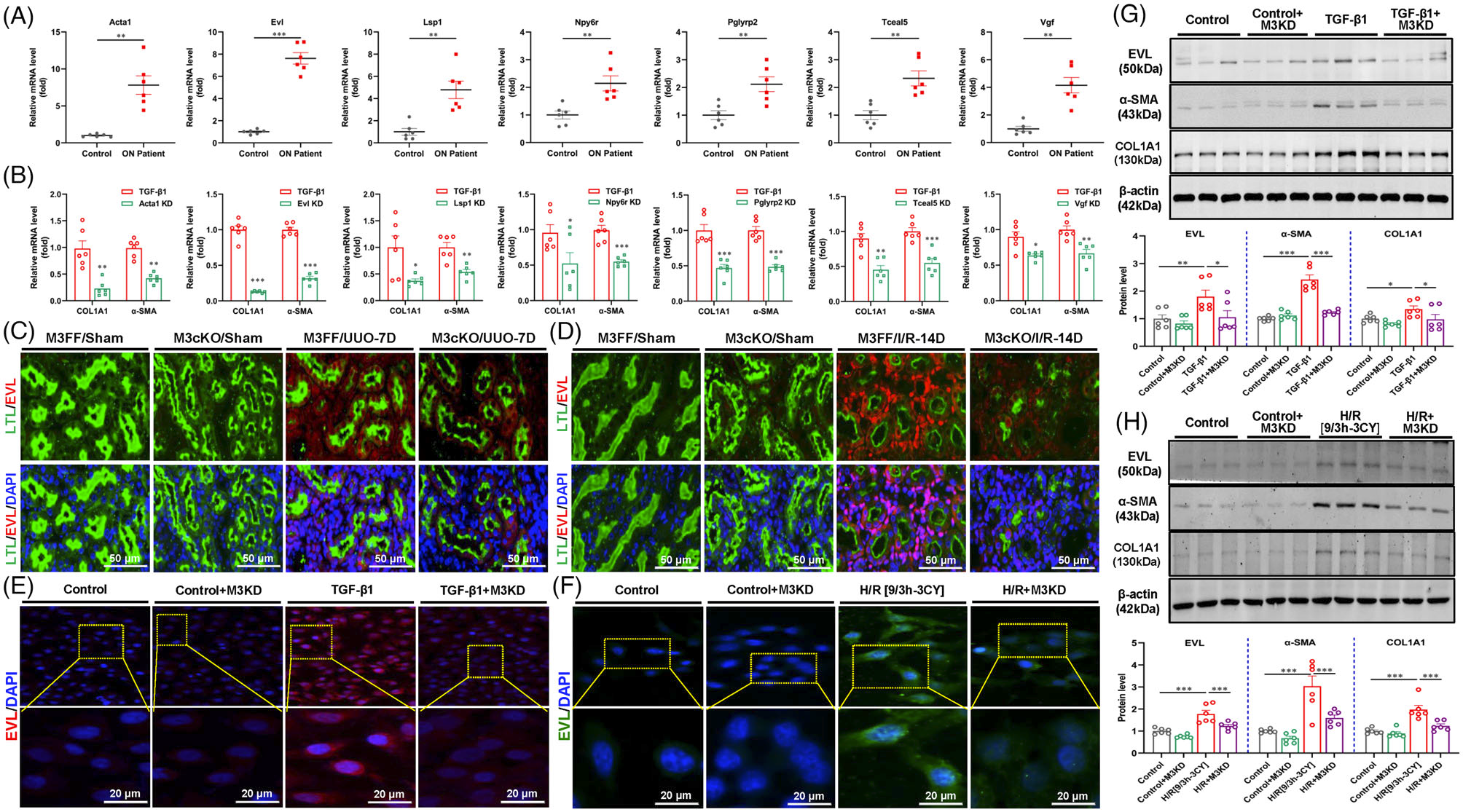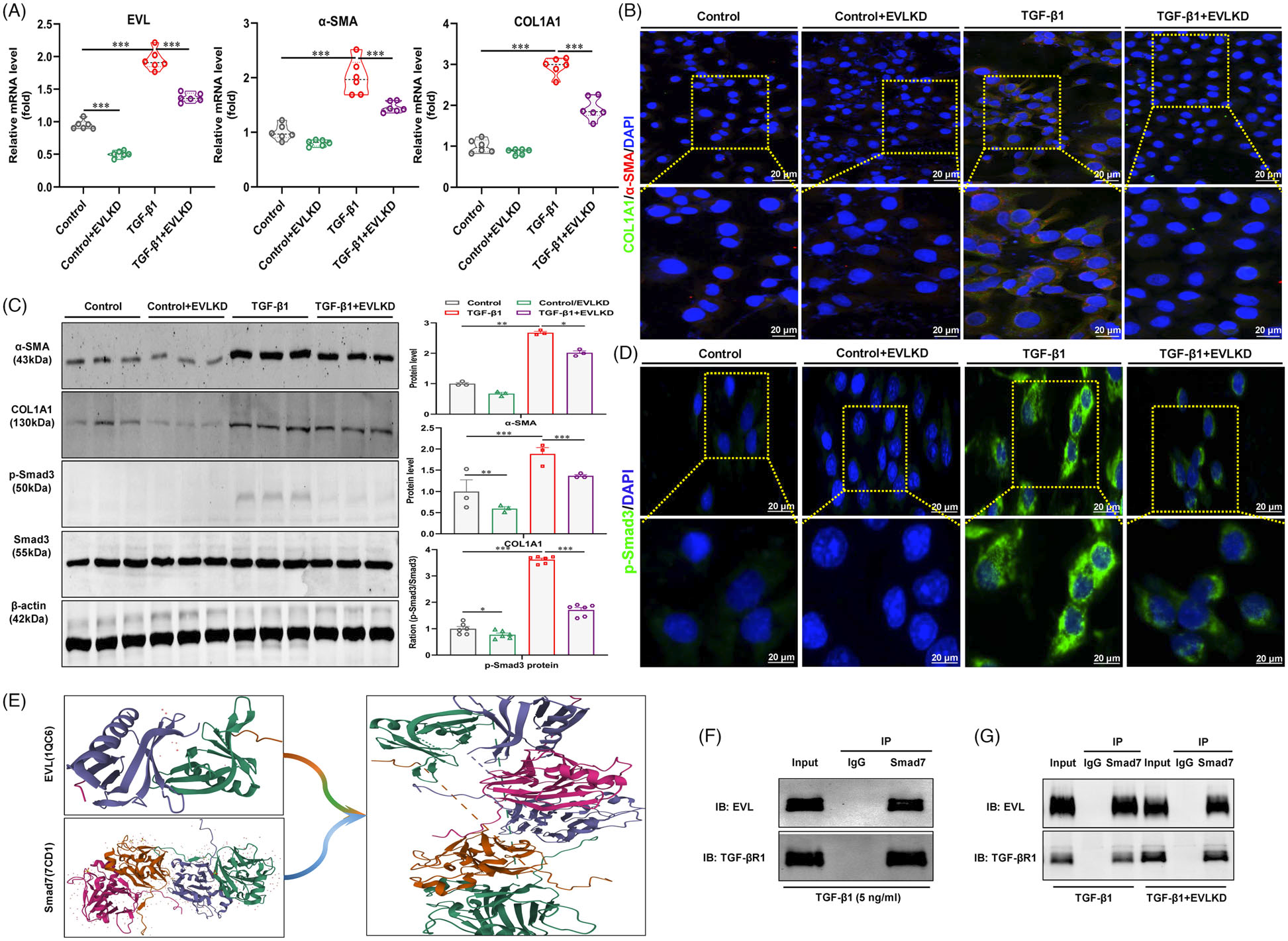N6 methyladenine (m6A) plays an important role in renal physiology and disease progression, but its function and mechanism in renal fibrosis still need to be comprehensively and deeply explored. Therefore, this study will explore the function and potential mechanism of m6A modification mediated by key regulatory factors in renal fibrosis, and search for promising anti renal fibrosis drugs.

In July 2023, Professor Meng Xiaoming's team from the School of Pharmacy at Anhui Medical University published a research paper titled "Genetic and Pharmaceutical Inhibition of METTL3 Alleviates Renal Fibrosis by Reducing EVL m6A Modification Through an IGF2BP2 dependent Mechanism" in the Journal of Clinical and Translational Medicine.

Using human and mouse kidney tissues as well as HK-2 cells as research subjects, Western blotting, quantitative real-time polymerase chain reaction and other methods were used to analyze the protein and RNA levels of m6A modification and regulatory factors in renal fibrosis. Using methylated RNA immunoprecipitation sequencing and RNA sequencing combined with METTL3 conditional gene knockout mice, explore the function and potential targets of METTL3.
By combining gene silencing and overexpression with RNA immunoprecipitation, the potential mechanism of METTL3 regulating EVL like proteins through m6A modification was studied to promote renal fibrosis. By combining molecular docking and virtual screening with in vitro and in vivo experiments, promising Chinese herbal monomers were screened, and their regulatory mechanisms on the METTL3/EVL m6A axis and anti renal fibrosis effects were explored.
The results showed that METTL3 and m6A modifications were highly activated in the tubular region of fibrotic kidneys and HK-2 cells. Upregulated METTL3 enhances m6A modification of EVL mRNA, improving its stability and expression through insulin-like growth factor 2 mRNA binding protein 2 (IGF2BP2) dependent mechanisms. The high expression of EVL binds to Smad7, inhibiting the inhibitory effect of Smad7 on transforming growth factor - β (TGF - β 1)/Smad3 signaling transduction, which in turn promotes the progression of renal fibrosis. Based on the molecular docking and virtual screening of METTL3 protein structure, a traditional Chinese medicine monomer called isoforsythin was screened from the database of traditional Chinese medicine monomers. It can inhibit the activity of METTL3 and the m6A axis of METTL3/EVL, indicating that it is a promising anti renal fibrosis drug.
In summary, the overactivated METTL3/EVL m6A axis is a potential target for the treatment of renal fibrosis, and the pharmacological inhibition of METTL3 activity by isoforsythin suggests that it is a promising anti renal fibrosis drug.
Experimental part
Epigenetic modification can regulate genome function without altering nucleotide sequence. Compared with the research method of exploring cell phenotype through sequencing, its results can better reflect the function and state of real cells. However, it is also limited by research techniques, and the reliability of research results has always been one of the difficulties that need to be seriously explored.
Tissue Cytometry technology is a widely used tissue in situ quantitative analysis technique in the field of life science research. The author of this article used techniques such as Western blotting, MeRIP seq, RNA immunoprecipitation, co immunoprecipitation, and cell thermal displacement experiments to reveal from multiple perspectives that the overactivated METTL3/EVL m6A axis is a potential target for the treatment of renal fibrosis. Inhibiting the activity of METTL3 through drugs is a promising anti renal fibrosis strategy.
In order to improve the credibility of the results, including human tissue samples, animal samples, cell experiments, and other parts, Tissue Cytometry technology was used to deeply explore the mechanism of drug action. Utilizing its high standardization and objective accuracy in data validation, tissue level validation was carried out for each step of data results, laying a solid foundation for future research.
For in-depth exploration and research on drug mechanism development, drug target screening, etc., Tissue Cytometry technology further provides an integrated microenvironment immune multi-color labeling solution, which can achieve in situ 10 color protein staining labeling of tissues. On the basis of the flow cytometry single-cell analysis method, this scheme constructs a complete set of deep data mining system for immune microenvironment, which has a mature multi label staining kit system, large-sized high magnification fully automatic continuous spectral panoramic imaging technology, and in situ traceable big data AI deep spatial quantification analysis function. In terms of analysis depth, the dataset can be specified arbitrarily based on the scope and quantity of the microenvironment. Visualized in situ multi label single-cell distribution quantification of different phenotypes can provide massive big data analysis; The advantage of the integrated solution lies in simplifying the flow of data and allowing users to customize exclusive apps according to their application fields, achieving fully automated unmanned operation, greatly improving the efficiency and reliability of in situ data output operations for organizations.

Figure 1 In the response of human kidney tissue, mouse models, and renal tubular epithelial cells to pro fibrotic stimuli, the levels of methyltransferase like 3 (METTL3) and N6 methyladenosine (M6A) modified F I G U R E 1 increased.
(C)Representative immunofluorescence staining of M6A and LTL in renal tissue of UUO mice.
(I)Representative immunofluorescence staining of METTL3 and LTL in renal tissue of ON patients.
(J)Representative immunofluorescence staining of M6A modification in renal tissue of ON patients

Figure 2 Ena/Vasp like protein (EVL) is a potential target gene for N6 methyladenosine (M6A) modified renal fibrosis mediated by methyltransferase like 3 (METTL3).
(C)Representative immunofluorescence staining of EVL and LTL in renal tissue of METTL3 conditional gene knockout (CKO) unilateral ureteral obstruction (UUO) mice.
(E)(F)Observation of the effect of METTL3 gene knockout on the expression of EVL in HK-2 cells induced by transforming growth factor - β -1 and hypoxia reoxygenation (H/R) using immunofluorescence staining images.

Figure 3 Methyltransferase like 3 (METTL3) directly promotes N6 methyladenosine (M6A) modification and Ena/Vasp like (EVL) mRNA stability in an insulin-like growth factor 2 mRNA binding protein 2 (IGF2BP2) dependent manner.
(J)(K)Representative immunofluorescence staining image analysis of IGF2BP2 expression in HK-2 cells treated with transforming growth factor - β -1 and H/R (n=3).

Figure 4 Silencing Ena/Vasp like proteins may alleviate the HK-2 cell fibrosis response induced by transforming growth factor - β -1 by inhibiting the mechanism of transforming growth factor - β -1/Smad3.
(B)Representative immunofluorescence staining analysis of HK-2 cell fibrosis markers inhibited by transforming growth factor - β -1 and vascular endothelial growth factor inhibition.
(D)Typical immunofluorescence staining analysis of p-Smad3 in HK-2 cells with knockout of the transforming growth factor - β -1 gene.